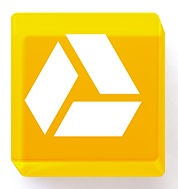Clickers
ACTIVE ROLE OF A LEARNER
One possible solution can be based on the Constructivism learning theory, which emphasizes the active role of learners engaged in constructing their own knowledge. In other words, it assumes that knowledge is individually constructed and socially co-constructed by learners based on their experiences. On this learning theory is based the idea of Classroom Communication Systems (CCS). These systems are technology products - combinations of hardware and software - designed to support communication and interactivity in classrooms. One of the first Classroom Communication Systems is the so-called “Clicker” and it was engaged in large college classes. The idea is simple: to engage all the classroom in the lecture the teacher would ask questions to the students, who were given a remote controller for their answers (Dufresne et al., 1996) (Beatty, 2004).
Here is an explanatory video of clickers used in college lectures:
IMPLEMENTATIONS
Since the smart phones (and tablets) gain a lot of popularity, modern implementations of eClickers are offered for several mobile platforms like iOS, Android or web based. Thus students can utilize their own mobile devices to participate and interact during lectures (the bring your own device principle). This eliminates the need for buying devices. Furthermore it is easier to engage students in large teams. Disadvantages are that it could be distracting if students use their smartphones to text each other or surf on Facebook etc. rather than participate.
Google Documents is a very simple and effective tool to use as a classroom communication system. The following few steps will show that google docs is not only a collaborative document editing tool as most users know it to be. The basic steps are to create a new spreadsheet, select "Tools" → "create Form", create some questions and share the link to the survey via e-mail per "share" button. As soon as the first student submitted his answers the spreadsheet is filled with it. Then simply select "Form" → "show summary of responses". The teacher could then show the anonymous results to the students.
Note that there is no mechanic for time limits. Students will get all the questions at once you cannot share live drawings. Though it is very easy to create and use, free of charge, good looking and requires just a web browser and a working e-mail account from the student side. Here is a more detailed tutorial:
eClicker is available in the iTunes Store for 14.99 USD. The teacher needs Apple hardware like an iPad or a Mac computer. Students can use a web browser (any platform) or the free eClicker Audience app. Since Wi-Fi is used for transmitting information, the maximum number of participants is 64. The teacher's device is automatically detected. The teacher can control what is displayed on the students screens: multiple choice questions, true/false questions, share pictures or even live drawings. There is a timer function, which can be deactivated if needed. Results can instantly be displayed and visualized on a whiteboard.
This should work fine for informal fast and simple usage. However open questions are not supported. The results cannot be tracked or saved.
Alternatives:
 Very professional tool, web based (24 - 66 USD per year)
Very professional tool, web based (24 - 66 USD per year)
 Simple features, web based or via SMS (free / 50 USD per year)
Simple features, web based or via SMS (free / 50 USD per year)
Linneman's large class: Sociology with Clickers:
 In English
In English Suomeksi
Suomeksi






